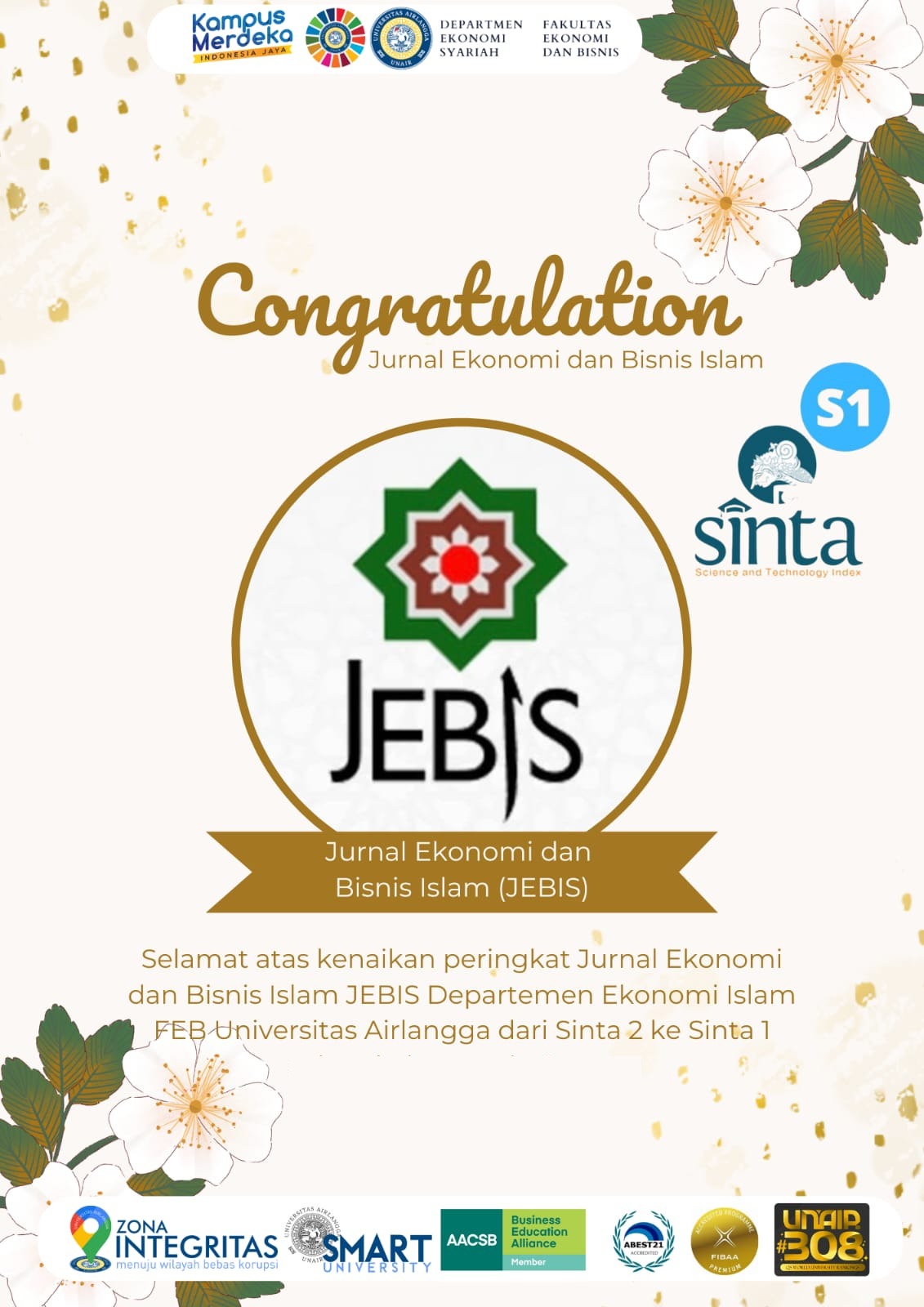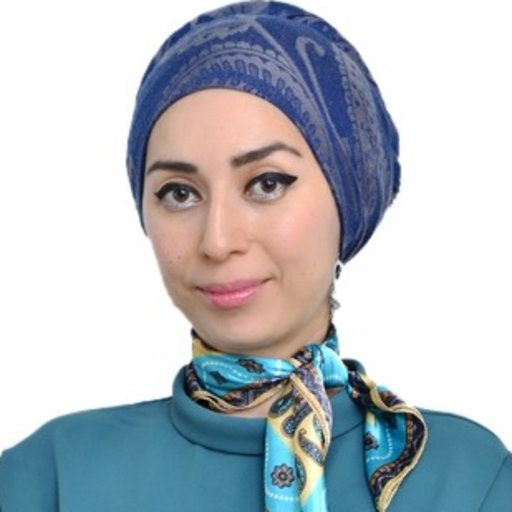RAISING COMMUNITY AWARENESS OF HALAL PRODUCT CONSUMPTION AND HALAL LIFESTYLE: A TRIPLE HELIX MODEL
Downloads
Ab Talib, M. S., Pang, L. L., & Ngah, A. H. (2020). The role of government in promoting Halal logistics: a systematic literature review. Journal of Islamic Marketing, 12(9), 1682–1708. https://doi.org/10.1108/JIMA-05-2020-0124
Ab Talib, M. S., & Wahab, S. N. (2021). Halal logistics in a rentier state: an observation. Modern Supply Chain Research and Applications, 3(2), 155–170. https://doi.org/10.1108/mscra-04-2020-0005
Ab Talib, M. S., & Zulfakar, M. H. (2023). Sustainable halal food supply chain management in a small rentier halal market. Arab Gulf Journal of Scientific Research. https://doi.org/10.1108/AGJSR-11-2022-0251
Al Fattah Al-Qur'an. (2014). Al-Baqarah:168. CV. Mikraj Khazanah Ilmu.
Al-Qaradawi, Y. (1994). Al-Halal wal al-haram fi al-Islam (15th Edition). Al Maktab Al Islami.
Al-shami, H. A., & Abdullah, S. (2023). Halal food industry certification and operation challenges and manufacturing execution system opportunities. A review study from Malaysia. Materials Today: Proceedings, 80(xxxx), 3607–3614. https://doi.org/10.1016/j.matpr.2021.07.331
Ambo, N. I., & Md Sapir, A. S. (2020). Halal Cosmetic Literacy among Malaysian Muslim Undergraduates Based on OECD's Financial Literacy Framewor. Albukhary Social Business Journal, 1(2), 113–127. https://doi.org/10.55862/asbjv1i2a011
Anggara, F. S. A. (2017). Development of Indonesia Halal Agroindustry Global Market in ASEAN: Strategic Assesment. Al Tijarah, 3(1), 65–78. https://doi.org/10.21111/tijarah.v3i1.940
Asnawi, N., Sukoco, B. M., & Fanani, M. A. (2018). Halal products consumption in international chain restaurants among global Moslem consumers. International Journal of Emerging Markets, 13(5), 1273–1290. https://doi.org/10.1108/IJoEM-11-2017-0495
Bashir, K. M. I., Kim, J. S., Mohibbullah, M., Sohn, J. H., & Choi, J. S. (2019). Strategies for improving the competitiveness of Korean seafood companies in the overseas halal food market. Journal of Islamic Marketing, 10(2), 606–632. https://doi.org/10.1108/JIMA-03-2018-0056
Borzooei, M., in, M. A.-I. J. of A. R., & 2013, undefined. (2016). Establishing a global halal hub: In-depth interviews. Citeseer, 3(10). https://doi.org/10.6007/IJARBSS/v3-i10/288
Cai, Y. (2022). Neo-triple helix model of innovation ecosystems: integrating triple, quadruple and quintuple helix models. Triple Helix, 1(aop), 1–31. https://doi.org/10.1163/21971927-bja10029
Chen, F., Wu, C., & Yang, W. (2016). A new approach for the cooperation between academia and industry: an empirical analysis of the triple helix in East China. Science, Technology and Society, 21(2), 181–204. https://doi.org/10.1177/0971721816640617
DinarStandard. (2020). State of the Global Islamic Economy Report.
Fauziana, H., Wardhana, A. K., & Rusgianto, S. (2022). The Effect of Education, Income, Unemployment, and Poverty toward the Gini Ratio in Member of OIC Countries. Daengku: Journal of Humanities and Social Sciences Innovation, 2(2), 181–191. https://doi.org/10.35877/454RI.daengku874
Febriyanti, A. R., Ratnasari, R. T., & Wardhana, A. K. (2022). The Effect of Economic Growth, Agricultural Land, and Trade Openness Moderated By Population Density on Deforestation in OIC Countries. Quantitative Economics and Management Studies, 3(2).
Ghifara, A. S., Iman, A. N., Wardhana, A. K., Rusgianto, S., & Ratnasari, R. T. (2022). The Effect of Economic Growth, Government Spending, and Human Development Index toward Inequality of Income Distribution in the Metropolitan Cities in Indonesia. Daengku: Journal of Humanities and Social Sciences Innovation, 2(4). https://doi.org/10.35877/454RI.daengku1092
Gunawan, S., Darmawan, R., Juwari, J., Qadariyah, L., Wirawasista, H., Firmansyah, A. R., Hikam, M. A., Purwaningsih, I., & Ardhilla, M. F. (2020). Pendampingan produk umkm di sukolilo menuju sertifikasi halalan thayyiban. Sewagati, 4(1), 14–19.
Haspramudilla, D. (2021). Kejar Peluang, Benahi Strategi, Melejit Lebih Tinggi. Https://Mediakeuangan.Kemenkeu.Go.Id/Article/Show/Kejar-Peluang-Benahi-Strategi-Melejit-Lebih-Tinggi.
Jamaluddin, J. (2014). MENGEMBANGKAN TEORI TAFRIQ AL-HALAL'AN AL-HARAM & I'ADAT AL-NAZHAR PERSPEKTIF HUKUM ISLAM. Jurnal Pemikiran Keislaman, 25(2), 261–273. https://doi.org/10.33367/tribakti.v25i2.182
Joshi, R., & Garg, P. (2020). Assessing brand love, brand sacredness and brand fidelity towards halal brands. Journal of Islamic Marketing. https://doi.org/10.1108/JIMA-04-2020-0104
Juliansyah, A. F., Putri, A. E., Suryadana, M. L., Endyana, C., & Wardhana, A. K. (2021). Global Muslim Response to Bandung Halal Tourism Branding. International Journal of Applied Sciences in Tourism and Events, 5(2), 197–206. https://doi.org/10.31940/ijaste.v5i2.197-206
Kasri, R. A., Ahsan, A., Widiatmoko, D., & Hati, S. R. H. (2023). Intention to consume halal pharmaceutical products: evidence from Indonesia. Journal of Islamic Marketing, 14(3), 735–756. https://doi.org/10.1108/JIMA-06-2021-0192
Kinyuira, D. K. (2019). Social performance rating in co-operatives. Corporate Governance and Sustainability Review, 3(2), 18–25. . https://doi.org/10.22495/cgsrv3i2p2
Krisharyanto, E., Retnowati, E., & Hastuti, N. T. (2019). Regulation and Provisions for Supervision of Halal Products in Indonesia. Journal of Legal, Ethical and Regulatory Issues, 22(1), 1–10.
Liu, Y., & Huang, Q. (2018). University capability as a micro-foundation for the Triple Helix model: The case of China. Technovation, 76–77(February), 40–50. https://doi.org/10.1016/j.technovation.2018.02.013
Maison, D., Marchlewska, M., Zein, R. A., Syarifah, D., & Purba, H. (2019). Religiously permissible consumption: The influence of the halal label on product perceptions depending on the centrality of religiosity. Journal of Islamic Marketing. https://doi.org/10.1108/JIMA-07-2018-0119
Malini, H. (2021). Small and Medium Enterprises Halal Literacy Measurement During Covid-19 Pandemic. Journal of Islamic Economics and Finance Studies Volume, 2(2), 110–121.
Maryam, A., & Sumar'in, S. (2022). Analysis of Halal Literacy Level on Halal Awareness and Use of Halal Products. IQTISHODUNA: Jurnal Ekonomi Islam, 11(1), 85. https://doi.org/10.54471/iqtishoduna.v11i1.1004
Maulan, S., Omar, N.A. and Ahmad, M. (2016), "Measuring halal brand association (HalBA) for Islamic banks”, Journal of Islamic Marketing, Vol. 7 No. 3, pp. 331-354.
Muslichah, M., Abdullah, R., & Razak, L. A. (2019). The effect of halal foods awareness on purchase decision with religiosity as a moderating variable: A study among university students in Brunei Darussalam. Journal of Islamic Marketing. https://doi.org/10.1108/JIMA-09-2017-0102
Mutmainah, L. (2018). The Role of Religiosity, Halal Awareness, Halal Certification, and Food Ingredients on Purchase Intention of Halal Food. Ihtifaz: Journal of Islamic Economics, Finance, and Banking, 1(1), 33. https://doi.org/10.12928/ijiefb.v1i1.284
Nafis, M. C. (2019). The concept of halal and thayyib and its implementation in Indonesia. Journal of Halal Product and Research, 2(1), 1–5.
Nugraha, W. S., Chen, D., & Yang, S. H. (2022). The effect of a Halal label and label size on purchasing intent for non-Muslim consumers. Journal of Retailing and Consumer Services, 65. https://doi.org/10.1016/j.jretconser.2021.102873
Nurdiansyah, A. (2018). Halal certification and its impact on tourism in Southeast Asia: a case study Halal tourism in Thailand. KnE Social Sciences, 26–43. https://doi.org/10.18502/kss.v3i5.2323
OJK. (2022). Siaran Pers: Survei Nasional Literasi dan Inklusi Keuangan Tahun 2022. Ojk.Go.Id. https://ojk.go.id/id/berita-dan-kegiatan/siaran-pers/Pages/Survei-Nasional-Literasi-dan-Inklusi-Keuangan-Tahun-2022.aspx
Perbawasari, S., Sjuchro, D. W., Setianti, Y., Nugraha, A. R., & Syamsu, Y. (2020). Information Literacy in Halal Tourism in Bandung Regency, West Java, Indonesia. Talent Development & Excellence, 12(1).
Prabowo, S., Rahman, A. A., & Rahman, S. A. (2012). Halal culinary: Opportunity and challenge in Indonesia. 4–5.
Rahman, A. A., Asrarhaghighi, E., & Rahman, S. A. (2015). Consumers and Halal cosmetic products: knowledge, religiosity, attitude and intention. Journal of Islamic Marketing, 6(1), 148–163. https://doi.org/10.1108/JIMA-09-2013-0068
Rahmawati, R. T., & Fathoni, M. A. (2021). The Effect Of Advertising And Product Quality On The Purchase Decision Of Halal Cosmetics With Online Consumer Reviews As Mediation Variables. STUDIES AND SCIENTIFIC RESEARCHES. ECONOMICS EDITION, 34.
Resdiana, E., & Sari, T. T. (2019). Penguatan Peran Triple Helix dalam Pariwisata Segitiga Emas di Pulau Gili Labak Madura. Journal of Governance Innovation, 1(2), 1–16. https://doi.org/10.36636/jogiv.v1i2.342
Sarpong, D., AbdRazak, A., Alexander, E., & Meissner, D. (2017). Organizing practices of university, industry and government that facilitate (or impede) the transition to a hybrid triple helix model of innovation. Technological Forecasting and Social Change, 123, 142–152. https://doi.org/10.1016/j.techfore.2015.11.032
Sasongko, D. (2020, August 24). UMKM Bangkit, Ekonomi Indonesia Terungkit. Https://Www.Djkn.Kemenkeu.Go.Id/Artikel/Baca/13317/UMKM-Bangkit-Ekonomi-Indonesia-Terungkit.Html#:~:Text=Hal%20ini%20bisa%20dipahami%20karena,Jumlah%20pelaku%20usaha%20di%20Indonesia.
Silalahi, S. A. F., Fachrurazi, F., & Fahham, A. M. (2021). Factors affecting intention to adopt halal practices: case study of Indonesian small and medium enterprises. Journal of Islamic Marketing. https://doi.org/10.1108/JIMA-05-2020-0152/FULL/HTML
State of the Global Islamic Economy Report. (2022). In Salaam Gateway - Global Islamic Economy Gateway. https://salaamgateway.com/specialcoverage/SGIE22
Utomo, S. B., Sekaryuni, R., Widarjono, A., Tohirin, A., & Sudarsono, H. (2020). Promoting Islamic financial ecosystem to improve halal industry performance in Indonesia: a demand and supply analysis. Journal of Islamic Marketing, 12(5), 992–1011. https://doi.org/10.1108/JIMA-12-2019-0259
UU BPJPH, UU NO.33 (2014).
Vaivode, I. (2015). Triple Helix Model of university–industry–government cooperation in the context of uncertainties. Procedia-Social and Behavioral Sciences, 213, 1063–1067. https://doi.org/10.1016/j.sbspro.2015.11.526
Vanany, I., Soon, J. M., Maryani, A., & Wibawa, B. M. (2019). Determinants of halal-food consumption in Indonesia. Journal of Islamic Marketing, 11(2), 516–530. https://doi.org/10.1108/JIMA-09-2018-0177
Wholey, J. S. (1994). Practical Program Evaluation (1st Edition). Wiley & Sons, Incorporated, John.
Wisudanto, Widiastuti, T., Mardhiyah, D., Mawardi, I., Robani, A., & Al Mustofa, M. U. (2023). The motivating factors for switching intention to use halal cosmetics in Indonesia. Journal of Islamic Accounting and Business Research. https://doi.org/10.1108/JIABR-08-2022-0220
Yunus, N. S. N. M., Rashid, W. E. W., Ariffin, N. M., & Rashid, N. M. (2014). Muslim's Purchase Intention towards Non-Muslim's Halal Packaged Food Manufacturer. Procedia - Social and Behavioral Sciences, 130, 145–154. https://doi.org/10.1016/j.sbspro.2014.04.018
Zhou, C., & Etzkowitz, H. (2021). Triple helix twins: A framework for achieving innovation and un sustainable development goals. Sustainability (Switzerland), 13(12). https://doi.org/10.3390/su13126535
Zhuang, T., Zhou, Z., & Li, Q. (2021). University-industry-government triple helix relationship and regional innovation efficiency in China. Growth and Change, 52(1), 349–370. https://doi.org/10.1111/grow.12461
Ziegler, Y., Uli, V., & Tatari, M. (2022). Implementing halal logistics in a non-Muslim-dominant environment: a proposal for reengineering the business processes in two stages. Business Process Management Journal, 28(8), 48–65. https://doi.org/10.1108/BPMJ-12-2020-0593

This work is licensed under a Creative Commons Attribution-NonCommercial-ShareAlike 4.0 International License.
- Every manuscript submitted to JEBIS must obey to the policy and terms set by Journal of Economics and Business Islamic.
- Publication rights on the contents of manuscript published by JEBIS is owned by JEBIS under consent and approval by the corresponding author(s).
- Full text of electronic publication of manuscripts can be accessed free if used for the purpose of education and research according to copyright regulation.
- Share ” copy and redistribute the material in any medium or format
- Adapt ” remix, transform, and build upon the material
- You must give appropriate credit, provide a link to the license, and indicate if changes were made. You may do so in any reasonable manner, but not in any way that suggests the licensor endorses you or your use.
- You may not use the material for commercial purposes.
- If you remix, transform, or build upon the material, you must distribute your contributions under the same license as the original.
Creative Commons Attribution-NonCommercial-ShareAlike 4.0 International License.





.png)














